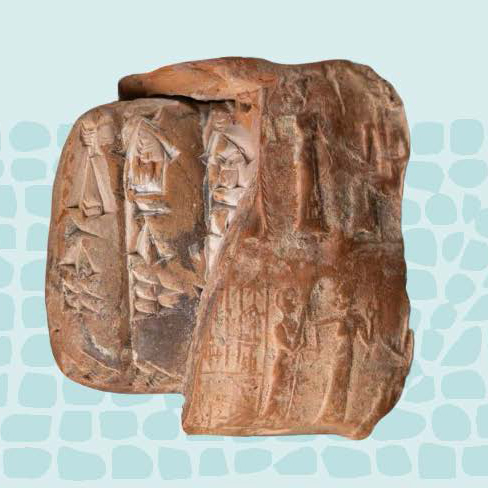-Temporary Exhibit-

Administrative tablet in clay envelope with seal impressions. King Shulgi of Ur, 2094-2047 BCE. MMA 67.34.1
In 1967, Museum Director Frank C. Hibben donated a small collection of inscribed clay tablets to the UNM Anthropology Museum (now the Maxwell Museum of Anthropology). These tablets, dating between 4100 and 1600 years ago, come from Mesopotamia in modern Southwest Asia, home to the world’s first cities, states, and writing systems.
Since their decipherment in the 1850s, tablets inscribed in cuneiform (wedge-shaped) script have provided insights into the economic, social, and religious lives of ancient Mesopotamians. They have also circulated around the world—as a result of colonial era archaeological expeditions, looting, and rampant site destruction fueled by terrorism, war, and economic desperation.
This exhibition highlights the eight cuneiform tablets in the Maxwell Museum collections and our attempts to uncover their journey to Albuquerque. It explores what such artifacts, once removed from their archaeological context, can – and cannot – teach us about the Mesopotamian past. It also explores the past and present legacies of the removal and destruction of cultural heritage and current efforts toward the restoration and restitution of archaeological heritage in the Middle East and far beyond.